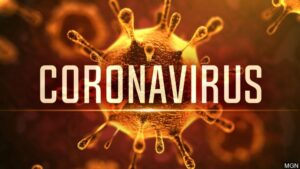
The novel coronavirus, commonly known as COVID-19, has caused fear around the world as tens of thousands succumb to the virus.
Discovered late last year, the virus has affected more than people’s lives. It has also affected businesses, schools and the economy as a whole.
But like past pandemics, such as the Spanish flu, SARS, and Ebola, there will be a cure or vaccine that will slow down the number of cases and deaths.
According to the Centers for Disease Control and Prevention, different parts of the country [United States] are seeing different levels of COVID-19 activity; the United States nationally is in the acceleration phase of the pandemic.
Similar to the coronavirus, the Spanish flu epidemic was one of the deadliest times. In 1918, it infected about one-third of the world’s population, according to a Healthline article written by Julia Ries. In that article, University of Minnesota pediatric infectious disease specialist, Dr. Mark Schleiss, mentioned that the Spanish flu was far different from the regular flu.
“The 1918 pandemic strain of influenza was new and novel for most people under the age of 40 or 50, but that’s where the death rate really was high,” Schleiss wrote.
Eventually, the Spanish flu became treatable and is now under control.
The most recent pandemic before COVID-19 was the Ebola virus. Between 2014 and 2016, Ebola was extremely deadly, killing up to 50 percent of those who got sick, but it wasn’t as contagious as COVID-19, according to the same Healthline article.
In the aforementioned article, UC Davis professor of epidemiology and ecosystem health, Dr. Christine Kreuder Johnson, commented on the fact that because Ebola symptoms were so severe, it was easy to identify and isolate people who’d been affected.
“You don’t have relatively healthy people with the [Ebola] virus walking around shedding the virus — going on the bus, going shopping, going to work — like we do with this [COVID-19],”. Johnson wrote.
There wasn’t a vaccine or cure made available for Ebola, but that pandemic did end around March 2016.
As of now, a vaccine for COVID-19 will most likely be ready in a year and things should calm down once people start practicing social distancing and proper cleaning techniques.
Remember, the coronavirus isn’t the first life-threatening disease to affect the world, and it likely won’t be the last.